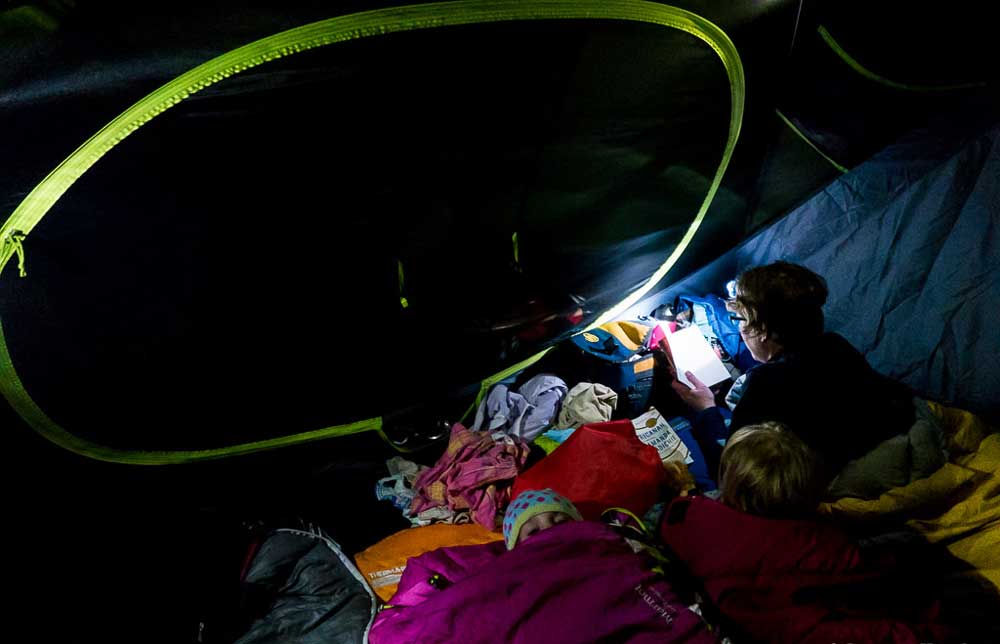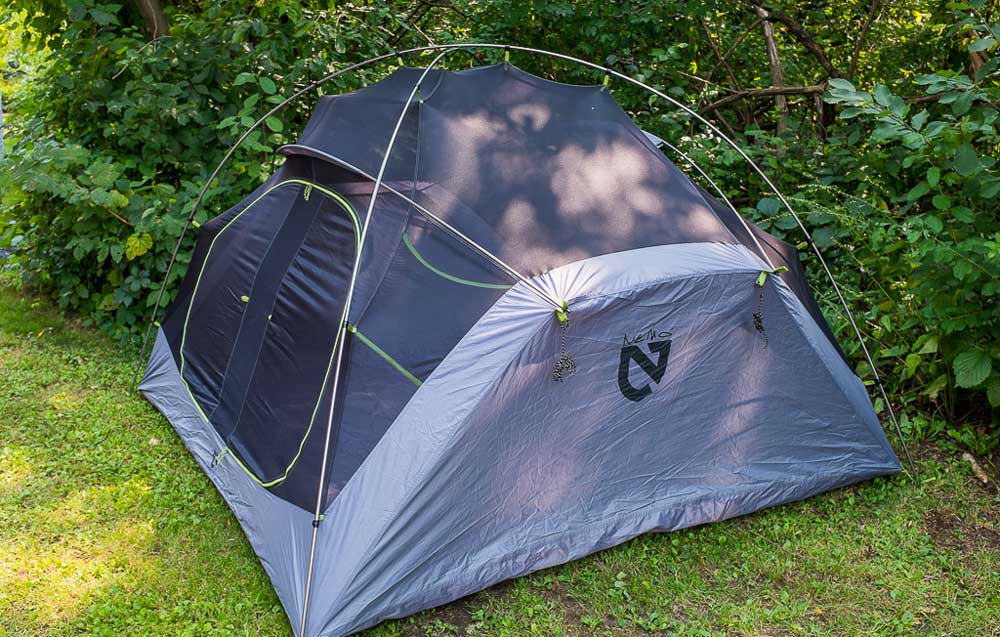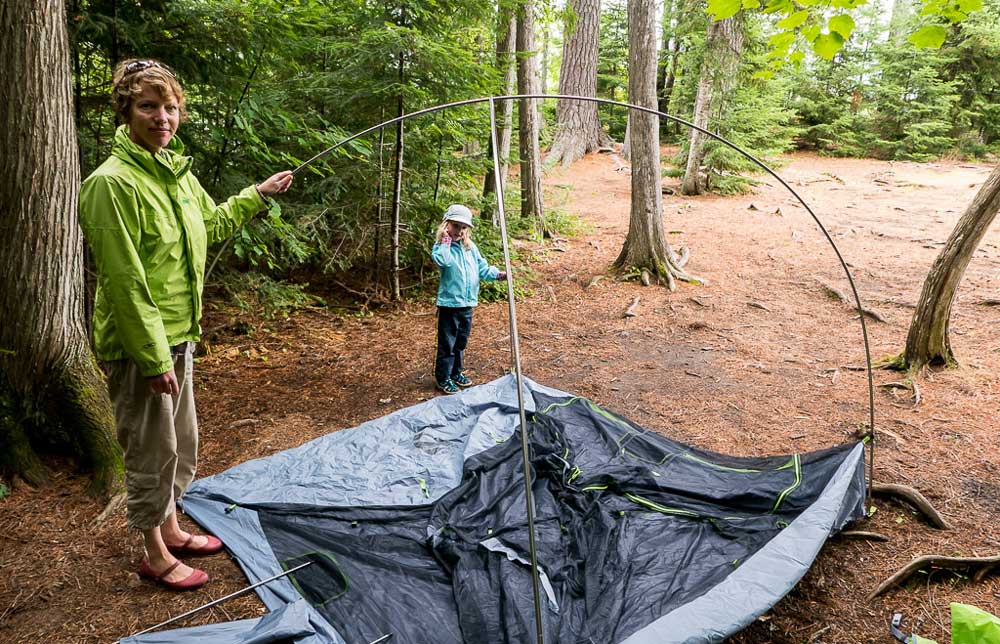[leadin]After five days of camping in the Northern Minnesota wilderness, the Nemo Bungalow stands out as one of the best family-friendly tents around. [/leadin]
The time had finally come for our family of four to find a new tent for summer adventures. We had been using an ancient tent that was more like a small cathedral and weighed more than our five-year-old child. We knew we needed something that would be tough enough for backcountry travel and comfortable for car camping trips.
The Bungalow, Nemo’s redesign of its old Asashi tent, is the largest in the company’s Losi line. It is large enough for family car camping and light enough for canoe or rafting trips where size and weight aren’t going to be a huge issue.
A Backcountry Camping Home
Our test was a five-day trip into Minnesota’s Boundary Waters Canoe Area Wilderness. Our goal before the trip was to try to single-portage (which means we would not have to double back to carry our canoe and gear) on the trails between lakes. The relatively lightweight Bungalow made it possible.
A nearly all-mesh body could be the Bungalow’s greatest selling point — and weakness. While the mesh provides superior ventilation, we were nervous about its durability. Nonetheless, the construction looks good. Seams are sturdy and all pole clips attach to the mesh with a satisfying click.
I have become a big fan of clips instead of fabric sleeves for poles. For everything but winter camping (snow-load) or mountaineering (wind), clips just make sense.
The corners and other stress points seem adequately reinforced. The tent, stakes, and poles have lightweight and simple bags. The floor and sidewall material are definitely lighter feeling than the ancient Moss tent I was using before.
Tent Set Up
My wife was the first to set it up in the yard before we left for the woods. The tent we received did not come with instructions, but a quick look at an online picture was all she needed to figure out the placement of the side poles.
It is so easy to assemble that with only a little help with the high snaps, our five-year-old set it up by herself. We timed her at 3 minutes.
Well Ventilated Tent
It takes two seconds t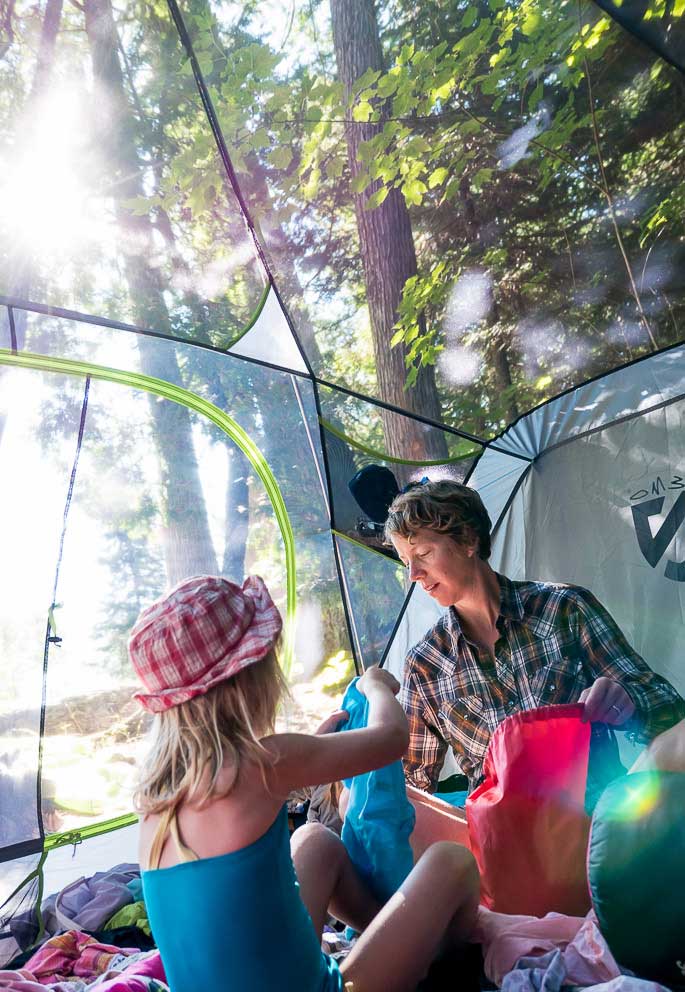 o see what this tent is perfect for — hot summer nights. This tent is so airy that we almost felt a bit exposed while inside (not a problem in the BWCA, but it might feel like a fishbowl in a K.O.A.). As it happened, the weather during our trip only allowed one night of fly-free sleeping. It was wonderful to see the trees and stars while snug in our bags.
o see what this tent is perfect for — hot summer nights. This tent is so airy that we almost felt a bit exposed while inside (not a problem in the BWCA, but it might feel like a fishbowl in a K.O.A.). As it happened, the weather during our trip only allowed one night of fly-free sleeping. It was wonderful to see the trees and stars while snug in our bags.
On the nights we used the rain fly, the tent was free of condensation in the morning. Even with its dense weave (which keeps the no-see-‘ums out), the mesh does not trap any moisture, probably due to the 1-2 inch distance between the fly and the mesh. We suspect that it will also stay dry in a heavy downpour and strong winds.
Vestibule & Design
The Bungalow’s vibrant light green color mimics young growth on pine boughs, and its grey base and black mesh allow it to blend into a wooded setting.
The main structure has one large oval door with a curved zipper line on each side. Though I like having a door on each end to ease midnight exits, the single door’s dual zipper system is wide enough to allow occupants to enter and exit from each side.
The vestibule’s single center zipper makes access a bit awkward.
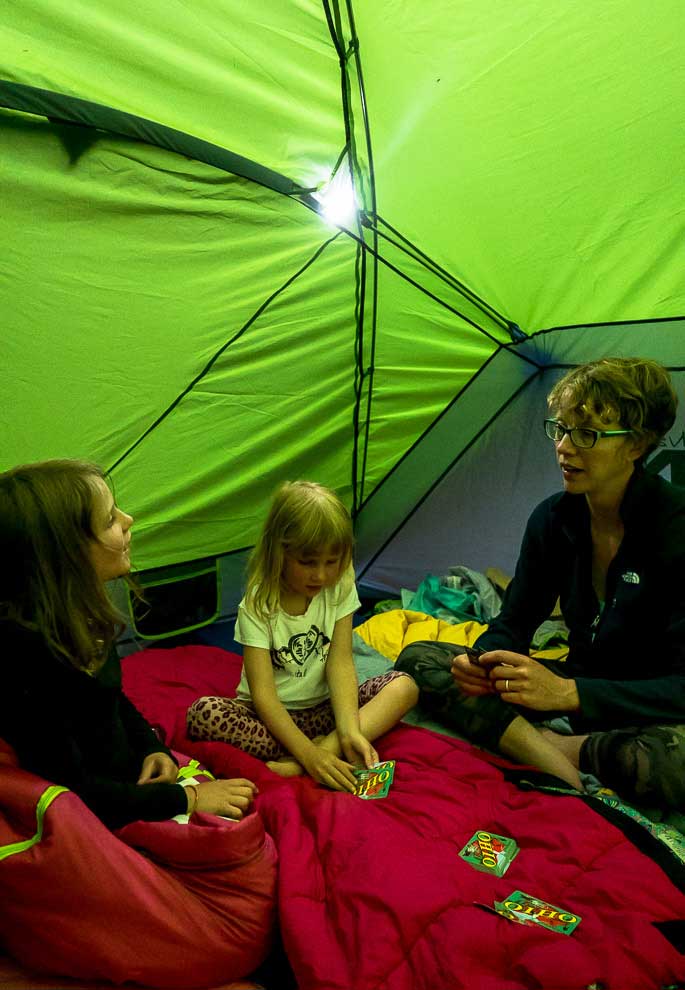 The side-walls tends to fall a bit slack, unless you can set the corner ground stakes equally apart to their furthest point and stake the guy lines tightly. A middle ground stake on each side might help.
The side-walls tends to fall a bit slack, unless you can set the corner ground stakes equally apart to their furthest point and stake the guy lines tightly. A middle ground stake on each side might help.
Inside, equally spaced and generous pockets can hold journals, playing cards, and stuffed animals. The ceiling even has a couple of nifty opaque pockets to place headlamps for ambient lighting. The floor plan allows for four full-length pads and sleeping bags, plus four small clothes bags.
The vestibule, without a hooped pole to expand it, seems smaller than the 20 square feet would suggest. And at 60 inches tall the ceiling gives enough room to sit up and pull on clothes.
Details Matter
Glow-in-the-dark guy lines definitely helped us steer clear of the toe-killing three-sided metal stakes. The ties on the tops of the stakes come off easily, which makes them almost impossible to dislodge from the ground.
Overall impression
After calling the Nemo home for five nights we were definitely impressed with it.
A comparison that kept coming to mind was that of the monumental shift from aluminum canoes to that of ultra-light Kevlar designs. With a little care, the Kevlar canoes easily outclass the aluminum ones in just about every category except durability. The same could be said for this tent. Its minimal weight, superior ventilation and smart design put it into a class of its own.

